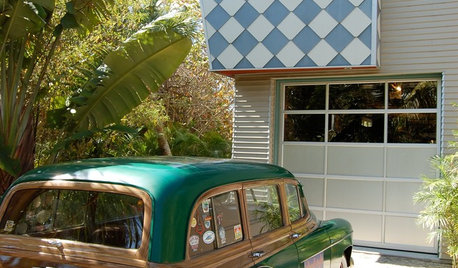Oh here we go again - Miele W4840 MILDEW
a1an
14 years ago
Featured Answer
Sort by:Oldest
Comments (48)
a1an
14 years agolast modified: 9 years agoRelated Discussions
Oh NO! Help with powdery mildew
Comments (6)I had terrible powdery mildew on a tuberous begonia, sprayed it with sulfur fungicide and burned it, then left it to get worse with the powdery mildew. Then I googled organic solutions to the problem and found a website that told about zucchini growers in Brazil who switched to a dilute solution of milk that worked so well that they stopped using expensive and toxic chemicals. The dilution is 1 part milk to 9 parts water. Skim is better, less likely to go rancid on the plant, said the site. I made up half a cup of milk from powdered milk, diluted it and sprayed the top and bottom of the begonia's leaves and its stem. The mildew disappeared almost entirely. We'll see how it goes. Even if the respite is temporary, it's fantastic to have a solution that works. !! Yay. Try it. So cheap....See MoreMiele??- buy $1500 W4840 vs $1900 W4842?
Comments (30)I own the Miele 4842 and have had it for 8 years now. I really love it. It gets the clothes clean, even if you rarely see water in the drum. Magical. I just recently had a problem with it, for the first time. It threw a fault code F63, which is the water intake unit. It threw the code a year before, but kept working, so I thought this time I should investigate more, before it actually stops working. With help through this forum and youtube, I learned how to take the lid off the machine, open up the water path unit whilst still attached inside my machine. I was told to look for alignment of timing gears. The white gear was not flush with the red gear. So my husband found a tiny washer, placed it under the white gear. We put it back together and tahhhhhh dahhhhhhhhh, it works again. The only cost was time and a washer we already had. Admittedly, without everyone's help here on the forum, who told us what size screwdriver to use and what to look out for, the fix would have taken a longer time for us to figure out. I really like this machine....See MoreQuick Rinse before main wash...Miele W4842/4840/4800
Comments (33)Heated or not heated prewash ? that's the question ;) The misundersanding is all inside the word "COLD" that is ambiguously used by Miele Chech all the tempeature settings in the W48XX : No heat = tap cold - cold fill only IMHO (but not only mine) prewash has to have a drain before the main wash (that will be carried with fresh water), otherwise it would be just a extended main wash. COLD = 30°C = 85°F ("almost warm" were less misunderstanding) Warm = 40°C = 105°F Very warm = 50°C = 120°F Hot = 60°C = 140°F Sanitize = 70°C = 160°F So the heater in the prewash engages or doesn't depending on the target temp AND on hot water line actual temp....See Morecan we try this again? (layout help)
Comments (23)I didn't mean to do that. I worked on the floorplan a while after malhgold posted about two islands and didn't see your response before posting it. So, here is what I think - unvarnished. I would want to have my back to the blank wall at the living room and look out through either window and the morning room while prepping and be able to pop out to greet people who wandered into the kitchen. So I would locate the prep space and a sink in an island that faced the outdoor porch off the morning room with seating between the island and the porch. I think I would place the clean up zone against the porch wall so it wasn't quite as far away from the dining room and the morning room. I would store the dishes in or immediately next to the cleanup zone. Refs are a quandary in that space because of its sheer size. I would be very tempted to close the opening on the living room wall and push the opening to the hall wall two or three feet away from the living room wall and park the ref and a food pantry there. I'm another who doesn't see the need for the frzr to be anyplace in particular, except that its probably your source of ice or if you freeze vodka. Kids love refs and microwaves, so I might start a kids prep with a wave they could use (someday) in the center section that juts out by the hall and have their dishes, dry snacks and paper products there. I wouldn't do the bake center inna cabinet because I would feel too constricted by its sides (like trying to mix in a small closet) and its doors would get in my way when open. (Altho it would do a splendid job of hiding the turbochef.) I might do an under-counter appliance lift for the mixer. I could find enough space on the island to mount one. Eventho I think lifts are really good solutions, I might instead do a deeper counter (30") on one wall with self-storing lift doors on part that disguised a mixer and flour canisters and such like stuff on the countertop because I think it would be easier to keep clean, organized and accessible. A good undercounter beverage ref is only two-thirds of the cost of your faucet:) Icemakers run $500 to $1500. If you entertain a lot, either can make sense. Good luck with your build....See Morea1an
14 years agolast modified: 9 years agohidroman
14 years agolast modified: 9 years agosomonica
14 years agolast modified: 9 years agofahrenheit_451
14 years agolast modified: 9 years agoa1an
14 years agolast modified: 9 years agohidroman
14 years agolast modified: 9 years agofahrenheit_451
14 years agolast modified: 9 years agosomonica
14 years agolast modified: 9 years agoboba1
14 years agolast modified: 9 years agoa1an
14 years agolast modified: 9 years agosshrivastava
14 years agolast modified: 9 years agoCyberspacer
14 years agolast modified: 9 years agocryptandrus
14 years agolast modified: 9 years agoa1an
14 years agolast modified: 9 years agodadoes
14 years agolast modified: 9 years agoa1an
14 years agolast modified: 9 years agomoon1234
14 years agolast modified: 9 years agohidroman
14 years agolast modified: 9 years agoa1an
14 years agolast modified: 9 years agocynic
14 years agolast modified: 9 years agoa1an
14 years agolast modified: 9 years agosomonica
14 years agolast modified: 9 years agosshrivastava
14 years agolast modified: 9 years agoa1an
14 years agolast modified: 9 years agosshrivastava
14 years agolast modified: 9 years agowhirlpool_trainee
14 years agolast modified: 9 years agosomonica
14 years agolast modified: 9 years agolivebetter
14 years agolast modified: 9 years agosshrivastava
14 years agolast modified: 9 years agolivebetter
14 years agolast modified: 9 years agolivebetter
14 years agolast modified: 9 years agolivebetter
14 years agolast modified: 9 years agoa1an
14 years agolast modified: 9 years agosshrivastava
14 years agolast modified: 9 years agofahrenheit_451
14 years agolast modified: 9 years agochefmom_2010
14 years agolast modified: 9 years agofahrenheit_451
14 years agolast modified: 9 years agosshrivastava
14 years agolast modified: 9 years agosandy808
13 years agolast modified: 9 years agochefmom_2010
13 years agolast modified: 9 years agoa1an
13 years agolast modified: 9 years agosshrivastava
13 years agolast modified: 9 years agosshrivastava
13 years agolast modified: 9 years agocolle
5 years agoci_lantro
5 years agocolle
5 years ago
Related Stories

DESIGNER SHOWCASESSan Francisco Decorator Showcase: Happy Days Are Here Again
Creative ideas, bold colors and inventive materials abound under one (very large) roof
Full Story
MOVINGRelocating? Here’s How to Make the Big Move Better
Moving guide, Part 1: How to organize your stuff and your life for an easier household move
Full Story
REMODELING GUIDES11 Reasons to Love Wall-to-Wall Carpeting Again
Is it time to kick the hard stuff? Your feet, wallet and downstairs neighbors may be nodding
Full Story
LIGHTINGReady to Install a Chandelier? Here's How to Get It Done
Go for a dramatic look or define a space in an open plan with a light fixture that’s a star
Full Story
TRADITIONAL HOMESMy Houzz: A Centuries-Old French Estate Charms Again
Time and local artisans help a couple realize an idyllic French country retreat — and you can rent it
Full Story
GREAT HOME PROJECTSReady to Repaint Your Home’s Exterior? Get Project Details Here
Boost curb appeal and prevent underlying damage by patching and repainting your home’s outer layer
Full Story
DECORATING GUIDESHemp, Hemp, Hooray! This Superplant May Be Legal Again in the USA
Hemp products are durable, sustainable, antibacterial and much more. Will the plant finally get the status it’s due in the States?
Full Story
KITCHEN OF THE WEEKKitchen of the Week: What’s Old Is New Again in Texas
A fresh update brings back a 1920s kitchen’s original cottage style
Full Story
DECORATING GUIDESEdit Keepsakes With Confidence — What to Let Go and What to Keep
If mementos are weighing you down more than bringing you joy, here's how to lighten your load with no regrets
Full Story
DECORATING GUIDESHere's How to Steer Clear of 10 Top Design Don'ts
Get interiors that look professionally styled even if you're taking the DIY route, by avoiding these common mistakes
Full Story




hidroman